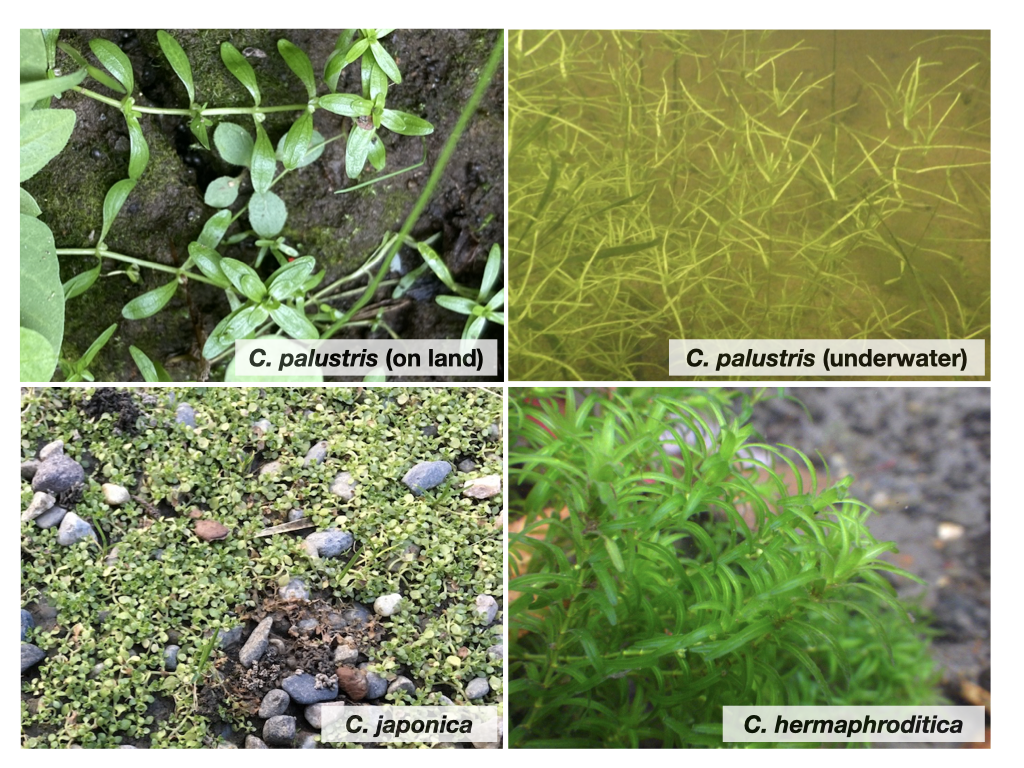
Aquatic plants refer to the terrestrial plants that have secondarily advanced to a riparian environment. They are always endangered by the risk of submergence under water. Because there are many factors that inhibit photosynthesis in the water, ordinary land plants cannot grow well. Thus, aquatic plants have evolved various traits as adaptations to such an environment. For example, to cope with seasonal or sudden changes in water levels, some aquatic plants have acquired an amphibious lifestyle in which the same individual can grow both in water and on land, and for such a lifestyle, they have evolved the ability called “heterophylly” to produce leaves with different morphologies between the submerged and aerial conditions. We have been studying the developmental and evolutionary mechanisms of heterophylly using an aquatic plant genus Callitriche. The genus Callitriche is suitable for developmental and evolutionary studies because it contains a variety of species with different lifestyles, including amphibious (e.g., C. palustris), terrestrial (e.g., C. terrestris), and completely aquatic species (e.g., C. hermaphroditica), and because the plants are small and easy to grow in the laboratory. In our previous studies, we elucidated the mechanism of the heterophyllous leaf development of C. palustris. We have also found that the differences in lifestyle within the genus are correlated with differences in the distribution of stomata and their formation processes. By using comparative developmental and genomic approaches, we are trying to clarify the process of morphological adaptation of the plants to aquatic environments. In addition, there are other clades in the family Plantaginaceae that have independently advanced into the aquatic environment, and we aim to develop our research using these plants as materials.
